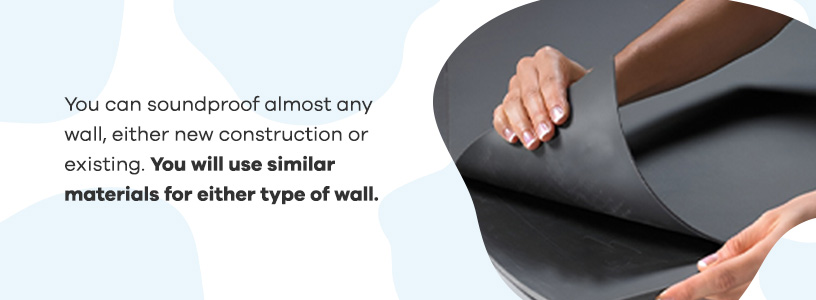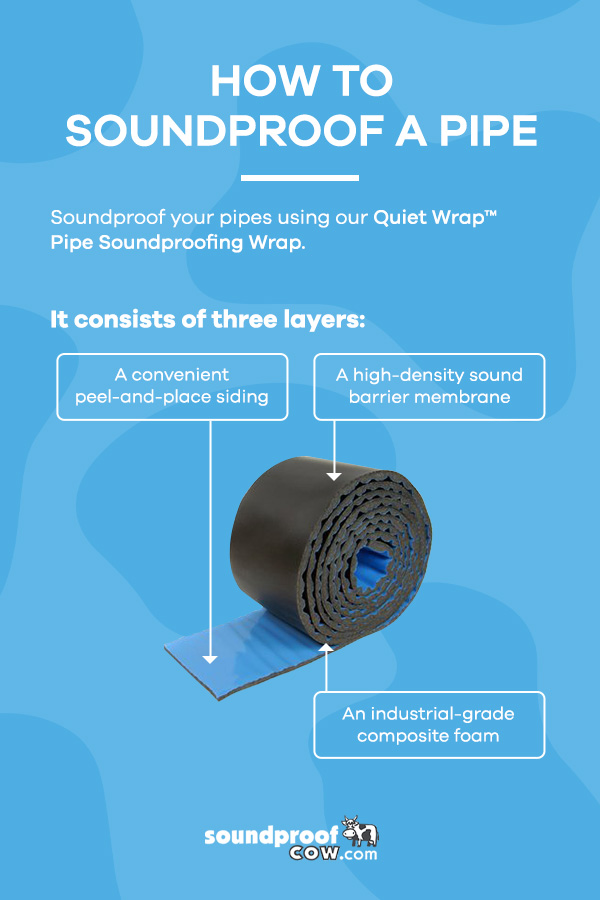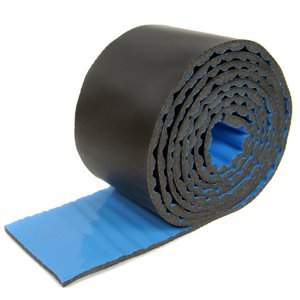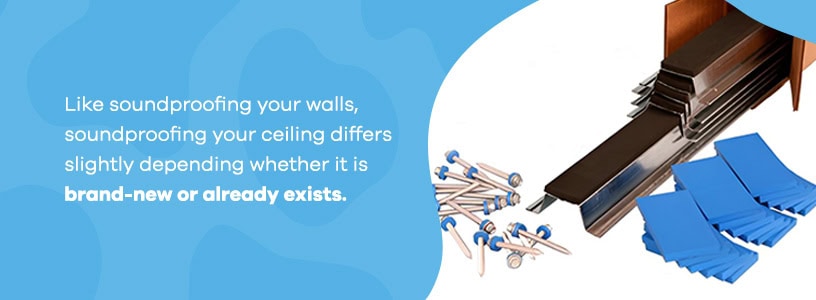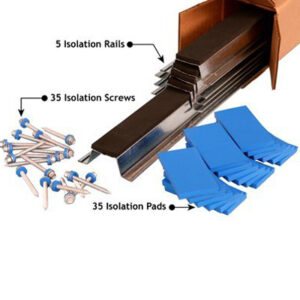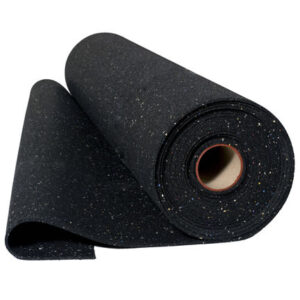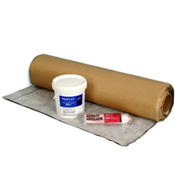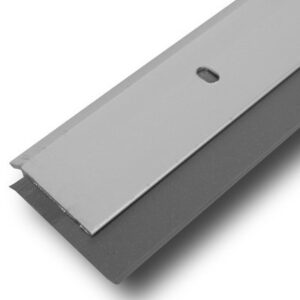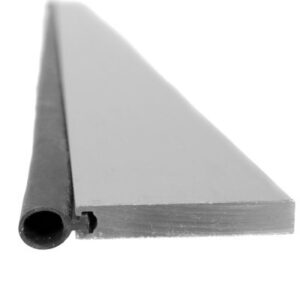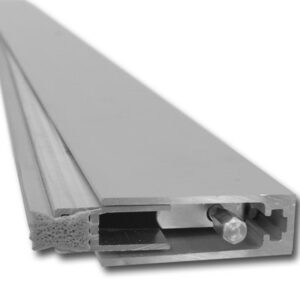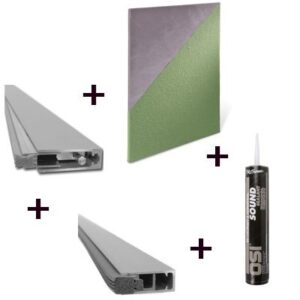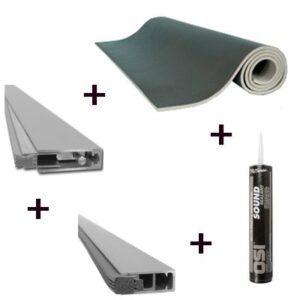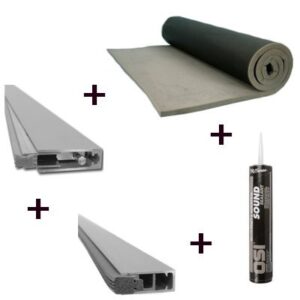

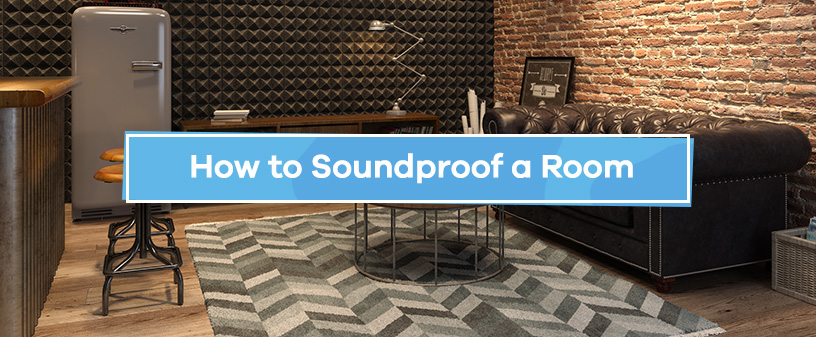
Soundproofing is beneficial for numerous reasons. You might want to drown out noisy neighbors or be considerate because you are the noisy neighbor. Whether building a soundproof listening room to enhance your music experience or soundproofing for privacy, we have solutions for you.
People are often familiar with the old egg carton method, but there are more effective solutions to soundproofing a room. The most effective methods are adding mass, soundproofing insulation, and installing sound isolation systems or acoustic panels to achieve the desired outcome.
Soundproofing is easier than you might think! We will go more in-depth with our explanation of soundproofing in this article.
Things to Consider When Soundproofing a Room
With Soundproof Cow, we offer a variety of soundproofing and acoustic solutions.
Your living space must work well with your daily routine. Consider the following factors.
- 1Determine whether you are adding soundproofing to new or existing construction. Both are possible, but installing soundproofing in new buildings is more effective.
- 2Soundproofing materials vary for the floor, walls, ceiling, or doors. We will outline the best materials to use in the steps outlined later.
- 3Soundproof Cow offers DIY solutions that make installation a breeze.
- 4Monitor sound levels and adjust your setup as necessary. The placement of soundproof materials like acoustic panels should be strategically placed to absorb soundwaves.
Before we break down soundproofing 101, figure out your problem spots. Are the walls thin? Is there an echo in the room? Is a significant amount of noise escaping through the door? Are you absorbing or reflecting sound? Your answer to these questions determines what room soundproofing solutions will work best for you.

Get Started with our Room Soundproofing Products:
Soundproof Any Area of a Room
At Soundproof Cow, we have the soundproofing products you need. And, we offer high-quality products at affordable prices. When you use our soundproofing products, you can create the soundproofed environment you’ve been looking for — all without breaking the bank.
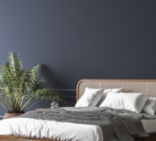 Wall Soundproofing
Wall Soundproofing
How to Soundproof Walls Soundproofing Methods
You can soundproof almost any wall, either new construction or existing. You will use similar materials for either type of wall. First, we’ll discuss how to soundproof new walls.
New Walls
The soundproofing process begins with bare, brand-new stud walls. Follow these steps as closely as possible:
1. Carefully mount the soundproofing material on one side of the wall. To do this, nail it directly to the studs using 1-1/4-inch roofing nails. Ensure the seams of the soundproofing material fit together as closely as possible. Ideally, the seams should be virtually invisible.
2. Ensure the soundproofing material is secure and there are no gaps.
3. Then, you’ll want Type X gypsum board or drywall. Install the drywall with 1.875-inch coarse-thread drywall screws. This step works best when the screws are about 10 inches apart. Leave a quarter-inch of space between the gypsum board and adjoining floors, ceilings, or walls.
4. Now, install the Quiet Batt™ soundproofing insulation between the studs. On the opposite side of the wall, install the isoTRAX™ system onto the studs.
5. Next, install the same gypsum board over the isoTRAX™ system using 1-1/4-inch fine-thread drywall screws. Place the screws approximately a foot apart, leaving a quarter-inch break between the gypsum board and any adjoining surface.
6. Fill the quarter-inch gap with OSI® Pro-Series® SC-175 Acoustical Sound Sealant. Finally, finish the gypsum board according to industry standards.
Existing Walls
The process will differ slightly if you’re working with existing walls. Since you can’t start from scratch, aim to modify what already exists.
1. Use a stud finder to locate the studs, then mark them with chalk or a pencil for easy reference.
2. Install the Quiet Barrier® soundproofing material as instructed with new walls. Use the same roofing nails to attach the Quiet Barrier® to the studs and line the seams neatly.
3. Seal the seams firmly.
4. Position the isoTRAX™ system over this barrier layer, following the same instructions outlined above.
5. With existing walls, you will need to install Echo Absorber™ Acoustic Panels between the isoTRAX™ system’s rails to avoid the triple leaf effect.
6. On top of this layer, install the gypsum board the same way you would with a new wall, using the same drywall screws.
7. Finish soundproofing the wall by filling all gaps with OSI® Pro-Series® SC-175 Acoustical Sound Sealant. Complete the gypsum board according to industry standards.
Shop Wall Soundproofing Products:
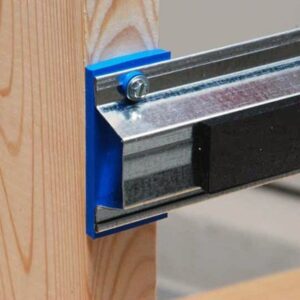
isoTRAX™ Soundproofing System
$205.98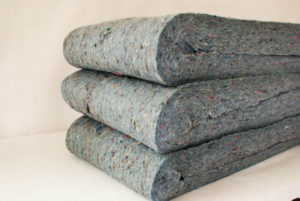
Quiet Batt® Soundproofing Insulation
$115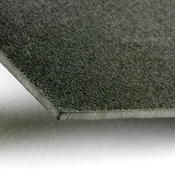
Quiet Barrier™ MD Soundproofing Material (Sheet)
$74.99 $68.99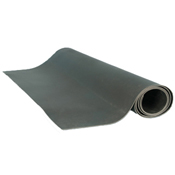
Quiet Barrier™ MD Soundproofing Material (Roll)
$194.03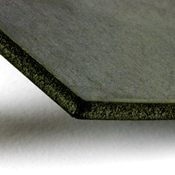
Quiet Barrier™ HD Soundproofing Material (Sheet)
$145.99 $137.99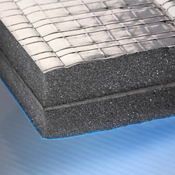
Quiet Barrier™ Specialty Composite w/PSA
$209.99 $199.99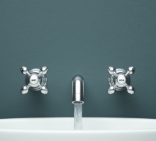 Pipe Soundproofing
Pipe Soundproofing
How to Soundproof a Pipe Soundproofing Methods
Imagine the plumbing system that works its way around your house. There are two main types — your water supply and drainage systems. Both generate unwanted noise that can interrupt your daily routine, no matter what room you’re in.
Soundproof your pipes using our Quiet Wrap™ Pipe Soundproofing Wrap. Our soundproofing wrap comes in rolls. It consists of three layers:
- A convenient peel-and-place siding
- A high-density sound barrier membrane
- An industrial-grade composite foam
The peel-and-place siding makes the application easy, and the high-density sound barrier membrane and composite foam absorb any impact noises from moving water or drainage.
You will need these for the installation:
- Tape measure
- Razor knife
- Scissors
- Pencil
Use the pencil to mark where you want to cut the wrap. Most people wrap the material around the pipe, measure and cut from there. Then, peel back about 4 to 5 inches of the backing and place the adhesive side on your pipe at a slight angle. Press and wrap the soundproof wrapping until you have worked down the entire pipe.
Shop Pipe Soundproofing Products:
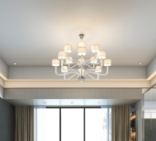 Ceiling Soundproofing
Ceiling Soundproofing
How to Soundproof a Ceiling Soundproofing Methods
Like soundproofing your walls, soundproofing your ceiling differs slightly depending whether it is brand-new or already exists. Both processes are similar with minor differences.
New Ceilings
1. First, install the Quiet Batt™ Soundproofing Insulation between the ceiling joists.
2. Then, install the isoTRAX™ system onto the ceiling joists around the insulation.
3. On the tracks, install a half-inch Type X gypsum board. We recommend using 1-1/4-inch drywall screws to do this.
4. Place the screws approximately 8 inches apart, leaving a quarter-inch of extra space between the gypsum board and any connecting walls.
5. Seal this gap by filling it with OSI® Pro-Series® sealant. Don’t forget to finish the gypsum board as specified by industry standards.
Existing Ceilings
Because studs aren’t visible in existing ceilings, you will have to find them yourself. Then, follow these steps.
1. Find the studs and mark them carefully with chalk or a pencil.
2. Your stud markers must be accurate because you’ll use them as a guide when installing the isoTRAX™ system. Then, you will install the Echo Absorber™ Acoustic Panels between each track.
3. Install a half-inch Type X gypsum board over everything else, securing the drywall with 1-1/4-inch drywall screws placed 8 inches apart. Leave a quarter-inch of space between the gypsum board and any adjoining walls.
4. Fill the gap with OSI® Pro-Series® sealant. Finish the gypsum board to industry standards.
Shop Ceiling Soundproofing Products:
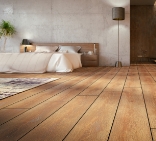 Floor Soundproofing
Floor Soundproofing
How to Soundproof Floors Soundproofing Methods
There are two different types of noise to account for when soundproofing floors.
- Impact noise is what you hear when people walk around. The footfalls cause vibrations that travel through the floor and into the joists, passing down into the ceiling of the room below.
- Airborne noise travels through the air. Everyday examples are talking and laughing, or the sound of a TV or music playing.
Soundproofing floors can get complicated because the process varies depending on the floor’s material. We will separate the sections for easier reading.
No matter the floor type, all require an underlayment that acts as a soundproof barrier. Various flooring materials work better with different underlayments, and you must use the correct type for your floor.
Hardwood Floors
Hardwood floors come in different forms. Depending on the subfloor, you will glue or nail the planks. Either way, adding an underlayment will reduce noise transfer. We recommend using PROFLEX™ 90.
PROFLEX™ 90 is a rubberized membrane, laminated to increase its effectiveness. It has a reinforcing layer of fabric on its outward-facing side and a silicone release sheet on its inward-facing side. It’s also waterproof and has a vapor-protected membrane that eliminates cracking. All these features make it the perfect underlayment for hardwood floors.
If you have floating hardwood, we suggest the Impact Barrier QT Flooring Underlayment, the most technologically advanced sound-blocking material available for hardwood. It protects against airborne and impact noises and is moisture-, mold- and mildew-resistant.
Laminate or Engineered Flooring
Laminate or engineered flooring has two significant noise problems — impact transmission and echoing.
Combat these using Impact Barrier QT Flooring Underlayment, which effectively dampens sound while protecting your floor from moisture damage.
Stone and Ceramic Tiling
Stone and ceramic tiling are particularly challenging to soundproof because the floor requires installation on an even layer. Again, we recommend PROFLEX™ 90 for this task. It is compatible with thin-set and mud-set mortar, making it an ideal soundproofing solution for stone and tile floors. Also, it helps prevent cracking.
The benefit of PROFLEX™ 90 is that you can lay the tile or stone flush with the top once installed correctly. That makes the underlayment completely invisible — you won’t notice it’s there, except for the difference it makes in sound quality and noise reduction in adjoining rooms.
Carpet
Carpet is slightly easier to soundproof. It is excellent for muffling footfalls and other impact noises but needs additional density to reduce airborne room noise.
Use a thick fiber barrier composite to soundproof a carpeted floor to reduce noise transmissions. It helps stop sounds from traveling through the floor from the room below and vice versa.
We recommend using the Impact Barrier® Flooring Underlayment. It consists of the finest, most consistent materials available. It will soundproof your floors while prolonging your carpeting’s life.
Shop Floor Soundproofing Products:
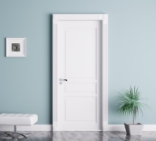 Door Soundproofing
Door Soundproofing
How to Soundproof a Door Soundproofing Methods
Doors are major noise pollution culprits because they usually have the most significant gap in an otherwise solid wall. There are gaps below, above and beside the door itself, making them an all-around trouble spot, negatively impacting a room’s sound quality.
Completely soundproofing a door is an enormous project requiring significant time, labor, and money. The good news? There are several simpler, more cost-effective solutions.
1. Door Sweeps and Seals
Installing a door sweep beneath the doorframe is an excellent way to help with noise problems. Another is to add a seal around the frame’s edges. For maximum soundproofing, try doing both.
We recommend using Quiet Door™ Adjustable Perimeter Seals. This product helps reduce sound transmission by creating a tight seal around the door. This specific seal is exceptionally versatile and works for wood or metal doors.
Quiet Door™ Adjustable Perimeter Seals have durable silicone seals and tough aluminum framing. The kit comes with the stainless steel required for installation. Door seals are also easy to adjust. The material will change over time as the seal ages and the weather fluctuates. A quick adjustment with a screwdriver can change it.
For a door sweep, we recommend the Quiet Door™ Automatic Door Sweep. This door sweep fits tightly along the bottom of any door to form a seal whenever the door shuts. It works well with metal and wood doors and is sturdy and resilient.
2. Acoustic Panels
Acoustic panels are another effective way to soundproof your door. We suggest using our Quiet Door™ Acoustic Panels. These consist of high-quality materials — a sound-blocking, viscoelastic polymer composite with a dense, fabric-covered layer that provides coverage for your door.
3. Door Kits
If you don’t want to shop around for individual door soundproofing tools, we offer residential, commercial and industrial soundproofing door kits. These convenient, comprehensive packages come with everything you need to soundproof your door.
4. Caulking
Lastly, adding a little extra sealant around the door’s edges can lessen any door’s sound transmission levels. We recommend using the OSI® Pro-Series® SC-175 Acoustical Door Sealant.
Shop Door Soundproofing Products:

I just wanted to let you know that in the end, sealing the air spaces on this door worked just fine and took care of the problem.
I really appreciate you taking so much time to share your expertise with me, and in particular recommending I try the simpler solution before investing in more expensive noise barriers. That is a big credit to you and your business.
- Mike


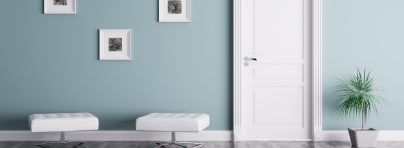 Free Acoustic Analysis
Free Acoustic Analysis 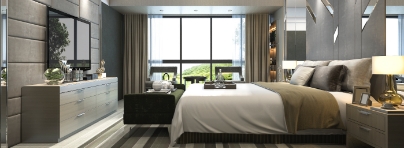 Soundproofing Questionnaire
Soundproofing Questionnaire 
